-
Hezbollah drone shot down over Israel
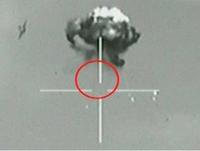
The Israel Air Force (IAF) planes shot down a UAV over the north Negev; the UAV entered Israeli air space from the west, but Israeli intelligence says the drone was launched by Hezbollah in Lebanon, then made its way south over the Mediterranean, then turned east when it reached the water off the Gaza Strip
-
-
Oshkosh Defense unveils new light vehicle for unconventional missions
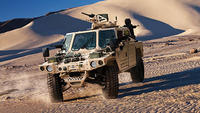
Using the occasion of the Modern Day Marine 2012 exposition, held 25-27 September in Quantico, Virginia, Oshkosh Defense unveiled its new Special Purpose All-Terrain Vehicle (S-ATV) designed for unconventional and reconnaissance missions, and also showed its Light Combat Tactical All-Terrain Vehicle (L-ATV), which was selected for the Joint Light Tactical Vehicle (JLTV) Engineering, Manufacturing and Development (EMD) phase; the joint services are expected to replace tens of thousands of HMMWVs with the JLTV
-
-
U.K. military’s drone spending keep rising
In an effort to boost its military, the United Kingdom, over the past five years, has spent more than two billion euros buying and developing unmanned drones; the U.K. has no intention of slowing down, as it is committed to spending another two billion euros on new unmanned aircraft
-
-
Former L-3 employee guilty of selling weapon secrets to China

A federal court judge in Newark, New Jersey convicted Sixing Liu on six counts of violating the Arms Export Control Act as well as possessing stolen trade secrets, transporting stolen property, and lying to federal agents; Liu is was convicted of stealing thousands of electronic files detailing performance and design of guidance systems for missiles, rockets, target locators, and unmanned aerial vehicles in 2010
-
-
Explosives dumped into Gulf of Mexico pose big problems
Millions of pounds of unexploded bombs and other military ordnance that were dumped decades ago in the Gulf of Mexico, as well as off the coasts of both the Atlantic and Pacific oceans, could now pose serious threats to shipping lanes and the 4,000 oil and gas rigs in the Gulf, warns two oceanographers
-
-
Technology soon to make drones deadlier, more autonomous
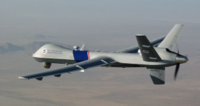
Unmanned aerial vehicles (UAVs) have become America’s main weapon in the campaign against terrorists — at the forefront are the Predator and the Reaper — and technological changes would soon make them even deadlier; in the next decade drones will be faster and carry more weapons than today’s versions; they will also have better sensors and more sophisticated computers, allowing them to plan and execute attacks with little human participation
-
-
Why common explosive sometimes fails
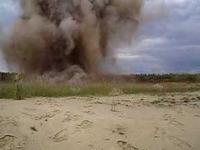
The explosive PETN has been around for a century and is used by everyone from miners to the military, but it took new research by Sandia National Laboratories to begin to discover key mechanisms behind what causes it to fail at small scales
-
-
Harvesting fuel for the fleet from seawater

Refueling U.S. Navy vessels, at sea and underway, is a costly endeavor in terms of logistics, time, fiscal constraints, and threats to national security and sailors at sea; in Fiscal Year 2011, the U.S. Navy Military Sea Lift Command, the primary supplier of fuel and oil to the U.S. Navy fleet, delivered nearly 600 million gallons of fuel to Navy vessels underway, operating fifteen fleet replenishment oilers around the globe; the Naval Research Laboratory believes there is a better way: extracting carbon dioxide (CO2) and producing hydrogen gas (H2) from seawater and then catalytically converting the CO2 and H2 into jet fuel
-
-
Raytheon Aerostat, SM-6 missile work together to protect ships
As tensions continue to rise over Iran’s nuclear weapons program, and the likelihood of military action to stop Iran from acquiring nuclear weapons increases – military action which would place U.S. ships in the Persian Gulf and the Indian Ocean at risk — there is good news from Raytheon: soon the seas may be a little safer
-
-
Precision agriculture using military technology: drones
Drones are military aircraft currently being repurposed for everyday use, especially within the growing field of precision agriculture; these flying robots allow farmers to detect changes in water content, plant health, and pesticide dispersal in their fields
-
-
Threat-recognition technology incorporates mind, machine

For soldiers operating in the field, the ability to detect threats from standoff distances can be life-saving; when advanced radar and drone coverage is not available, soldiers typically rely on their own vision to scan their surroundings; DARPA links human brainwaves, improved sensors, and cognitive algorithms to improve target detection
-
-
Four-legged “pack mule” robots demonstrate their capabilities
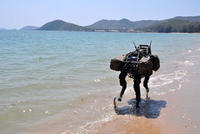
Two completed prototype robotic “pack mules” exhibit reduced noise, new gaits, and improved perception, the two functioning platforms have started to run through the paces similar to what they could one day experience carrying gear for a squad of Marines or Soldiers
-
-
More cyber-secure UAVs
The software that runs complex military systems such as UAVs contains tens of thousands of lines of code; this code is designed by human beings, and human beings make mistakes; DARPA wants military systems to be run by fail-safe software, ad for this purpose has created the High-Assurance Cyber Military Systems (HACMS) program; Rockwell Collins has been selected as the prime contractor for the unmanned air vehicle portion of the HACMS
-
-
Serious limitations make boost-phase missile interception impractical
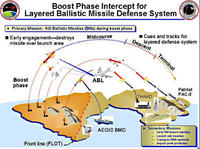
One of the central elements of President Reagan’s 1983 “Star Wars” ballistic missile defense initiative was boost-phase defense: boost-phase defense systems are intended to shoot down enemy missiles immediately following launch while the rocket engine is still firing; a new congressionally mandated study by the National Research Council study says that to defend against ballistic missile attacks more effectively, the United States should concentrate on defense systems that intercept enemy missiles in midcourse and stop spending money on boost-phase defense systems of any kind
-
-
Apple rejects app which tracks drone strikes against militants
Apple has rejected an app, developed by a New York student, which tracks U.S. drone strikes in Pakistan; Apple said the app violated rule 16.1 of its guidelines, which bans “excessively objectionable or crude content”
-
More headlines
The long view
Tantalizing Method to Study Cyberdeterrence
Tantalus is unlike most war games because it is experimental instead of experiential — the immersive game differs by overlapping scientific rigor and quantitative assessment methods with the experimental sciences, and experimental war gaming provides insightful data for real-world cyberattacks.
Testing Cutting-Edge Counter-Drone Technology
Drones have many positive applications, bad actors can use them for nefarious purposes. Two recent field demonstrations brought government, academia, and industry together to evaluate innovative counter-unmanned aircraft systems.
European Arms Imports Nearly Double, U.S. and French Exports Rise, and Russian Exports Fall Sharply
States in Europe almost doubled their imports of major arms (+94 per cent) between 2014–18 and 2019–23. The United States increased its arms exports by 17 per cent between 2014–18 and 2019–23, while Russia’s arms exports halved. Russia was for the first time the third largest arms exporter, falling just behind France.
How Climate Change Will Affect Conflict and U.S. Military Operations
“People talk about climate change as a threat multiplier,” said Karen Sudkamp, an associate director of the Infrastructure, Immigration, and Security Operations Program within the RAND Homeland Security Research Division. “But at what point do we need to start talking about the threat multiplier actually becoming a significant threat all its own?”
The Tech Apocalypse Panic is Driven by AI Boosters, Military Tacticians, and Movies
From popular films like a War Games or The Terminator to a U.S. State Department-commissioned report on the security risk of weaponized AI, there has been a tremendous amount of hand wringing and nervousness about how so-called artificial intelligence might end up destroying the world. There is one easy way to avoid a lot of this and prevent a self-inflicted doomsday: don’t give computers the capability to launch devastating weapons.
